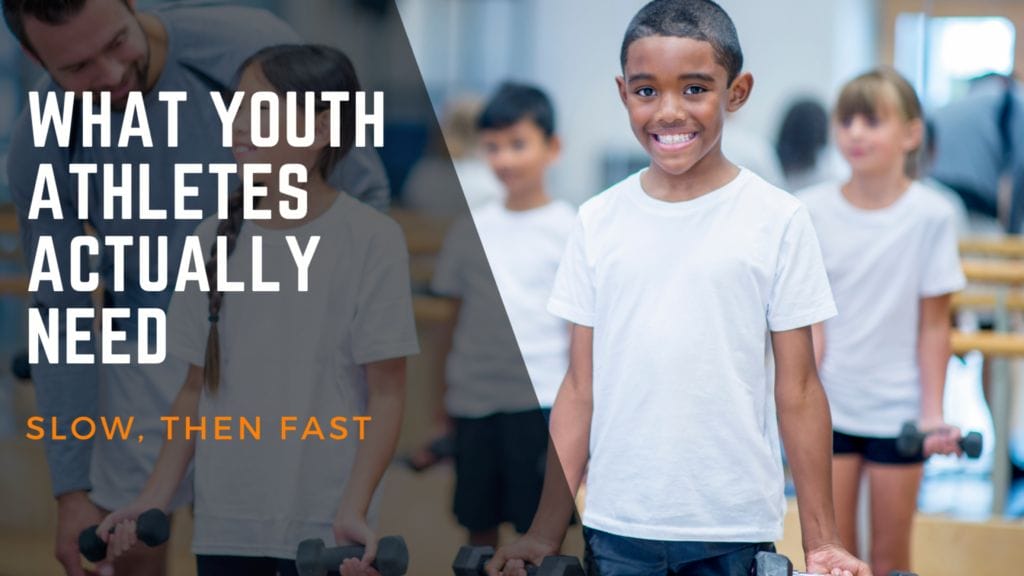
80,000 high school female athletes will tear their ACL playing their sport this year.
Most of those injuries will happen in basketball and soccer.
Most of those injuries will happen playing defense.
Almost all of those injuries will happen while cutting sharply or jumping and landing with the knee in a valgus (turned in) position.
That is a staggering number for an injury that is not easily fixed.
Oh, and by the way, after getting the repair done, 30% of those athletes will have an incident of re-injury.
Yet I continue to see the same dumb stuff (that won’t help) programmed for youth athletes.
I see “Agility and Speed” camps for young athletes all the time. I see kids hopping and jumping and cutting in the offseason as a way to get them better for next season. Yet these things are almost the exact opposite of what they need.
To compound the issue even further, every single time we post a picture of a young athlete back squatting, I get a litany of comments about how bad it is for young people to lift weights.
It’s almost like I’ve entered some bizarre, alternate universe where the truth is the exact opposite of reality.
They should be squatting, deadlifting, lunging, pushing and pulling. Once again, all under control and potentially, all with weight.
They should be doing these things for 3 reasons.
1. Learning things under control helps them develop motor patterns correctly. Slow, then fast. Learn how to squat slowly, correctly and while maintaining knee tracking, then let’s talk about doing something more advanced like cutting or jumping and landing. Hauling ass then trying to fix it at high speed is a recipe for disaster (80,000 of which happen every year).
2. Lifting weights tax a motor pattern in a way that helps reinforce the pattern. Gradually increasing load and stress on a movement will help expose any errors in that movement. While the point is not to show errors necessarily, everyone can do things perfectly at a glacial pace. By adding load, you are able to expose that movement to a little more stress at a time, finding out if that movement changes to compensate.
I don’t know what the lateral force on the knee is in a cutting motion, but I know it’s a lot. By performing slow, loaded movements using the knee through a full range of motion, the structure of the knee will adapt to become stronger and more resilient.
Our bones, muscles and most importantly in this case, connective tissues respond phenomenally to load. Increasing weight, letting the body adapt, and repeating for weeks on end will prove monumentally helpful to the long term adaptation and injury prevention of the young athlete.
3. Once these basics are mastered, and the athlete moves further towards their season, then they should start to perform the more advanced movements, but it must be done slowly first.
If more coaches, parents and programs understood those 3 things, we’d have significantly fewer injuries to our young athletes and significantly fewer problems for them in the future, which is what it really should be about anyway.
If you’re in Sandpoint, and have a young athlete who needs help with these things, we have several Young Athlete programs designed to help.
